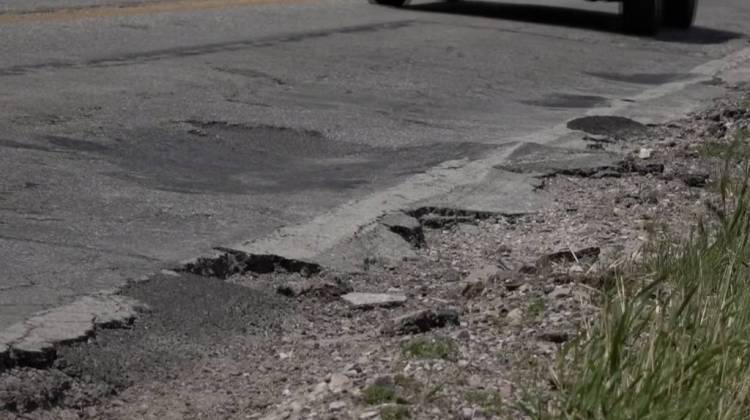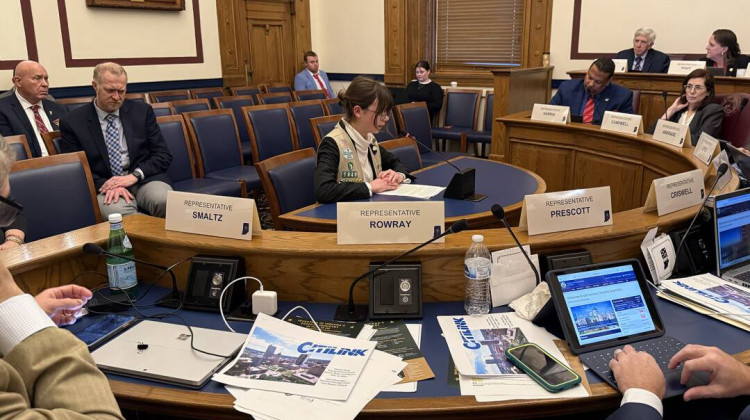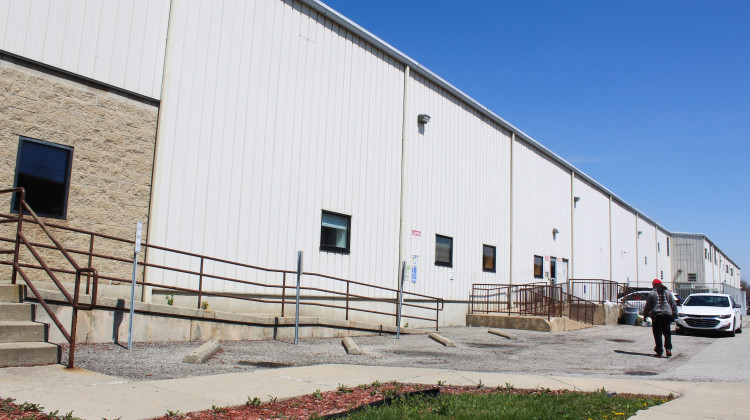So far in 2016, 3,197,126 board feet of timber has been harvested on Indiana state forests—more than twice the amount in 2002.
Forests cover 21 percent of Indiana. But 200 years ago that number was 85 percent. According to State Forester John Seifert, that all started to change back in the mid-1800s.
“There was a lot of clearing of land for agriculture, for subsistence farming, and there was obviously a lot less forest land at that time,” Seifert said.
By 1900, Indiana was only 7 percent forested, although it was also the leading hardwood producer in the nation. In 1901, the Indiana General Assembly created the Board of Forestry—today’s Division of Forestry (DOF)—in an attempt to revive the state’s forests.
“The legislature, through concerns, I think, from citizens, thought there was a need to, not only to start a system that had public lands, but also a system that supported private lands management,” Seifert said.
DOF manages state forests, which are public lands owned by the state. While state forests, state parks, and nature preserves all sound like the same thing, there’s one key difference between a state forest and all the other public lands managed by the Department of Natural Resources.
“The thing that’s really different that separates us from other divisions in DNR is, you know, every DNR division was set in statute what their goals and objectives would be," Seifert said. "And ours has always been manage the forest for commodities as well as wildlife and recreation.”
Commodities—that’s the key word. State forests exist, in part, to be logged. They’re different from state parks or nature preserves, which exist solely to protect nature, although the distinction can be troublesome.
“It also causes us the most conflicts at times,” Seifert said.
If not conflicts, then differences in opinion. Like from people like Jeff Stant, the director of the Indiana Forest Alliance, an environmental nonprofit that wants to see less logging on public land.
“We value having a timber industry in Indiana, we want to see more forestry practiced as an incentive to reforest more land,” Stant said. “But we just don’t think the state forests should be some industrial wood lot.”
Back in July, Stant was walking through Yellowwood and Morgan-Monroe State Forests, near Bloomington, with Jim Jean. Jean lives nearby, he walks these forests almost everyday and likes to hunt when it’s in season. But his favorite thing to do is pick mushrooms.
“Got some oyster mushrooms here. The real white ones are the fresh ones.” Pointing to another patch a few feet away, Jean said, “Those are older, they’re yellow, they’ve been rained on, they’re starting to fall apart, they’re pretty nasty.”
Stant and the IFA aren’t against logging. He just thinks wild nature and recreation — hiking, camping, horseback riding, mushroom picking — should have a higher priority at DOF.
“The place where you’re supposed to be able to do that is the state, public land — that’s why it’s important, that’s why just wild nature should be a much higher priority to the Division of Forestry relative to logging than it is,” Stant said.
Jean takes that a step further.
“Me, I’m an old zero cut guy, I don’t think they should cut at all on the state forests,” he said.
But that scenario isn’t very likely. Stant and Jean would disagree with Seifert, the state forester, but according to him logging is an important part of keeping the forests healthy.
“When I came in in 2005 and ’06, my foresters were telling me, ‘Jack, the forest is aging, lots of mortality’s going on, we need to think about regeneration,’” Seifert said.
The amount of timber harvested from state forests is on the rise, from around 3.5 million board feet cut in 2003 to a record high 17 million in 2014.
 DONATE
DONATE






 View More Articles
View More Articles




 Support WFYI. We can't do it without you.
Support WFYI. We can't do it without you.